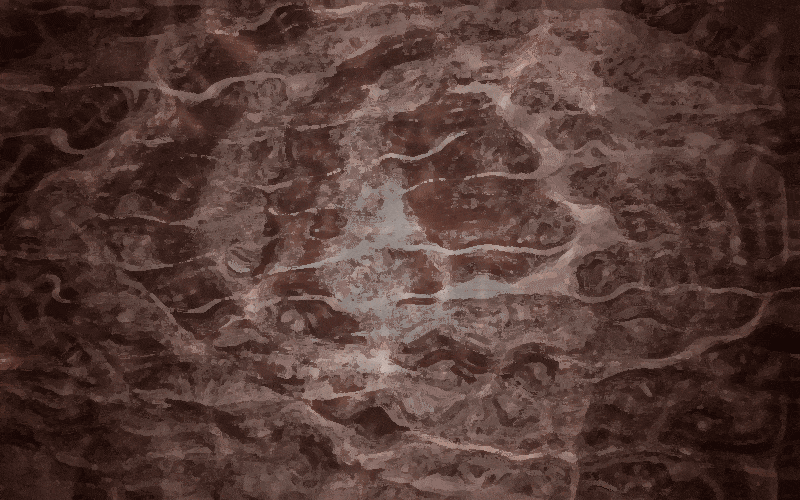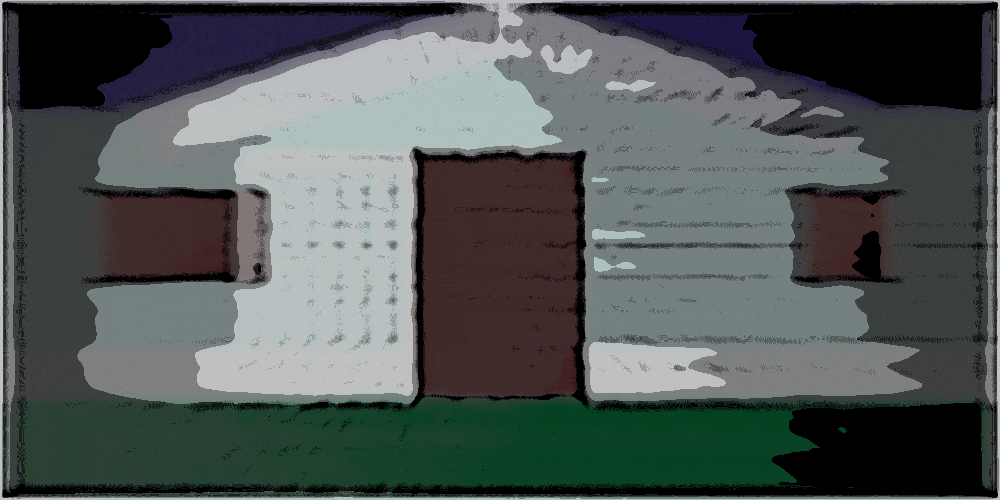All of humanity’s problems stem from its inability to sit quietly in a room alone.
Blaise Pascale
Count Xavier de Maistre, a French officer stationed in Turin, Italy, fought a duel in 1790 that earned him a 42-day house arrest, two days longer than the quaranta giorni of traditional quarantine. At first, this soldier and socialite must have writhed against his walls. He was a traveler, and lived many years away from his native France, expiring in St. Petersburg, Russia, in 1852. His Wanderlust was even directed skyward, in an unrealized dream of flight to America on wings of paper held together with wire.
I’ve been thinking a lot about de Maistre, during this time of sheltering in one (cramped, monotonous, potentially maddening) place, because of A Voyage Around My Room, his account of traveling in one place during his imprisonment. Though deprived of his paper wings, he soared as an adventurer of the great indoors. Bounded in a nutshell, as many millions of us are now, he made himself king of infinite space. His slim travelogue is not a literary curiosity; it’s a book for our time. I am well past the 40-day mark of my own quarantine, and have, in fact, recently renewed my vows to isolation. A Voyage Around My Room reads like a self-help guide for the sick of home. For those whose freedom of movement has been arrested, Xavier de Maistre is the Saint of the Stationary.
Each chapter of A Voyage Around My Room, one for every day of confinement, is a postcard from a country strange yet familiar, far away yet close. The Count locks his door, changes into his pajamas, and addresses his armchair army of travelers: “Let all the unhappy, sick, and bored people of the whole world follow me!” He then marches forth to confront his cell, 36 steps in perimeter, and to celebrate without any “rule or method” its tourist attractions: his armchair (“what a capital article of furniture it is”), his pink-and-white bed (“a cradle decked with flowers. A throne. A sepulcher.”) A withered rose loosens a chapter full of memories. In chapter ten, de Maistre dusts a portrait, revealing flaxen curls and a gleaming forehead, and “time and space disappear . . . and I grow young again, against the order of nature.” The moment passes, and when it does he is a year older. Room travel is also time travel.
Though solitary, de Maistre resembles the crowd-loving artist Charles Baudelaire describes in “The Painter of Modern Life.” This painter, Monsieur G., is, like de Maistre, a passionate observer, a flaneur, a perfect idler who “takes a lively interest in things, even the most trivial in appearance.” If Monsieur G. is the poet of the city, de Maistre is the bard of the chamber. If the former lives to be “away from home yet to feel [himself] everywhere at home,” the latter remains at home while also feeling transported elsewhere. By the last chapter, de Maistre has enjoyed his ramble so much that when it is time to break the seal on his room and return to liberty, he is reluctant to leave this “enchanting land of imagination” that holds “every good thing, and all the riches of life, within its realm.” A few years later, de Maistre became a willing recidivist and ventured inside again with A Nocturnal Expedition Around My Room.
De Maistre’s voyage became a bestseller upon publication in 1794. This triggered a micro-genre of miniaturist explorations. Others duly circumnavigated their wine cellars, drawers, tents, and even coat pockets. Time slows and curls; space dilates over the written page. The German writer Sophie La Roche undertakes a two-volume journey around her writing desk. Another, David Friedrich Jaquet, writes in Journey Around my Room, 1812-1813, “I have taken barely four steps and the description takes up almost a hundred pages.”

Though the genre faded by the mid-19th century, it produced a few notable descendants. Marcel Proust is a room peregrinator par excellence, settling into his cork-lined quarters to re-member all the rooms he’s known and “recall from each . . . in succession what the bed was like, where the doors were, how daylight came in at the windows . . . what I had in my mind when I went to sleep . . . ” because, after all, the “real voyage of discovery consists not in seeking new landscapes, but in having new eyes.” For Virginia Woolf, the sickroom reveals “undiscovered countries . . . precipices and lawns sprinkled with bright flowers.” (I found during my own convalescence after receiving a kidney transplant that morphine helps with that.) Elisabeth Bishop’s poem, “12 O’clock News,” echoes Gaston Bachelard’s dictum: the “miniature is one of the refuges of greatness.” In it, she explores the uncanny topography of the writing room. An ashtray brimming with cigarette butts is a nest of “soldiers . . . in hideously contorted positions, all dead.” A gooseneck lamp is a moon above a typewriter, which is an “escarpment that rises abruptly from the central plain,” its “elaborate terracing . . . gleaming like fish scales.” The novelist Nicholson Baker is de Maistre’s soul brother when he asks in his essay “Rarity:” “Haven’t you felt a sort of peculiar worry about the chair in your living room that no one sits in?”
But if de Maistre has a dauphin, one who grasps the physics and metaphysics of room travel, it is the French argonaut of the interior, Georges Perec. His volume Species of Spaces and Other Pieces is a user’s manual for indoor adventurism, a room-rambler’s manifesto, filled with lists and instructions for the homebound: “Apply yourself. Take your time . . . Force yourself to write down what is of no interest, what is most obvious, most common, most colorless.” Perec’s central argument in these lovely essays is that we have forgotten how marvelous the mundane, how unheimlich the heimlich, is. Daily newspapers bombard us with everything but the daily; but as Bishop intimates in her poem, the unacknowledged news of the day lies not in disasters, scandals, and contagions, but in dailiness. Within seemingly banal objects and practices, forgotten songs lie dreaming, waiting for the right sort of attention to set them singing.
The way Perec sees it, indoor travel is, at heart, a romantic project. As room travelers, we read our repositories the way we read love letters, poring over every object, whether it is “a matchbox holder, a nail file, or a cardboard box containing little multi-coloured index-cards,” holding every facet to the light, until we know it as if for the first time. We must become anthropologists of the ordinary, psychogeographers of the habitual, and “question that which seems to have ceased forever to astonish us.” Perec commands you to make “an inventory of your pockets, of your bag. Ask yourself about the provenance, the use, what will become of each of the objects you take out. Question your teaspoons.”
Having been definitively winnowed into the non-essential basket, I have been reading these writers and training myself to be a voyageur de mes chambres. Like de Maistre, I have contracted into my home and into myself, but not because of an ill-considered duel. No, ever since my body has housed someone else’s kidney, its doors are, so to speak, ajar, its rooms vulnerable to transgression, because of a weakened immune system. At the beginning of the coronavirus pandemic, my nephrologist advised me, first, to cancel a planned trip to Canada because of my obvious “underlying medical condition.” A week later, I was to stay inside until ( . . . ) I did venture outside a few times, but with every encounter with a human, I felt like an astronaut without his spacesuit. I considered taking a road trip, but where would I have gone? And gas stations with their oft-handled pumps scare me.
So I retreated to my home, a mollusk into its shell, to chart my voyages and sharpen my attention against the flint of monotony and stasis. I live in a small town on the Hudson River in what’s known as a ranch-style house, sometimes called a “rambler.” Macadam driveway, sloping lawn, rhododendrons. Inside, the rooms flow into one another: the kitchen, dining room, and living room on one side, bedrooms and a study on the other: two blocks joined by a corridor.
I’ve become a Columbus of the noonday kitchen, a Magellan of the midnight passage. I have seen things you people wouldn’t believe. Unsettled sink water casting shifting webs of sunshine to the kitchen wall. Dust motes glittering in half-lit golden spirals. In the ringing silence, I stare at the spice rack and play the color game: What color is paprika, precisely? Riverbank clay? Martian regolith? At the fireside, I play the sound game: When embers settle, what is the word for that distant glassy sound they make, like wind-shaken icicles?
As Perec instructs, I take inventories. Why are there so many of you spoons, and so few knives? And how do the forks feel about it? Is the kettle as content on this burner as that? I see you there, Quaker Rice Cakes, offering “flavor with other natural flavors” and, in fine print, a hotline for the forlorn on every package: “1-800-856-5781: We’re here to help.” For many moments, I stare at a photograph of my young father, now old and laid low by cancer, knowing I cannot visit him because he lives in Canada, on the other side of the cordon sanitaire.
I tread the floorboards from one side of the house to the other, plank to plank, the fine gaps between them lines of latitude and longitude. A cobweb like motionless smoke obscures a coving. Moonlight breaks in cool geometries over a wilted peony and its petal-drift, fills the well of a frosted-glass bowl, green as marine ice. The house lists and sways in the evening river wind. Is it slowly absorbing me? Am I soon to join the butter bell and the eggcup, the house key and the ticket stub, in their shabby reliquaries . . . a nameless refugee caged behind glass panes, like one of those tender buttons the Virgin of Utopia Parkway imprisoned in his curious cabinets?

I reach my desk. The wood grain flows in sinuous lines over the flat surface like a river’s current. The far side is a shoreline, strewn with rocks, driftwood, shells, from Mexico, Canada, New Zealand — a heterotopia of other places, other voyages, reminders of worlds beyond my walls. The whorled horn of an ammonite fossil conjures not only the sun-lanced forest in Spain where I found it, but the sun-lanced Mesozoic seas where the mollusk filled and emptied its septated chambers. Where does memory leave off and invention begin? A lump of azure sea glass is a monocle trained on the wrack line of eelgrass and bleached seashells where my fingers uncovered it. Where does the talisman take over from the found object?
These fugue states are brief, followed by unease: What am I after, drifting through the flotsam of my rooms? What architectural footnote do I hope to uncover, what cloistered immensity, to use a Donnean inflection: a furtive hatch behind the wallpaper, yielding to a room within a room, where a blue peninsula lies lit by the light of other days? Are my voyages any less indulgent than encrusting a living tortoiseshell with gemstones, or inventing new perfumes to understand the syntax of scent? Should I be doing something different, more practical, less fantastical?
When Emma Faucon, a 19th-century room traveler, finished her journey, she claimed to feel “more benevolent, civilized, charitable, industrious, and in a word, better and thus happier” than she did before. I wouldn’t go that far. I am eager for quarantine to end, to see the inside of a building that doesn’t belong to me. But in the meantime, if the world outside is denied me, I try to discover another world in a dust mote, heaven in a dollop of Purell. If Fernweh is what the Germans call the ache to be elsewhere, I have Nahweh, the longing to be closer than ever to my familiar spaces, to see my intimate inanimates anew. My journeys have forced me to reconsider the declensions of space and time. When at last I am able to move around outside again, and do something crazy like a walk down Main Street with ice cream in a cone and a bouquet of fresh flowers — what a lark, what a plunge — I will do so with new eyes.
Quarantine has maritime origins, and my home has acquired a nautical feel: the hatches battened down against virus, the pantry stocked with food. The kitchen window is my porthole to the street. I see my anchored neighborhood, each house marooned in its own Sargasso Sea. Neighbors, my fellow voyagers, distantly greet one another. Are they becoming slowly unmoored? Do they feel the urge to make late-night calls to Quaker Rice Cakes? Behind our masks, we live our miniature lives. But we also sense, beyond our antiseptic horizons and this still safe harbor, a rogue wave rushing around the globe. •




